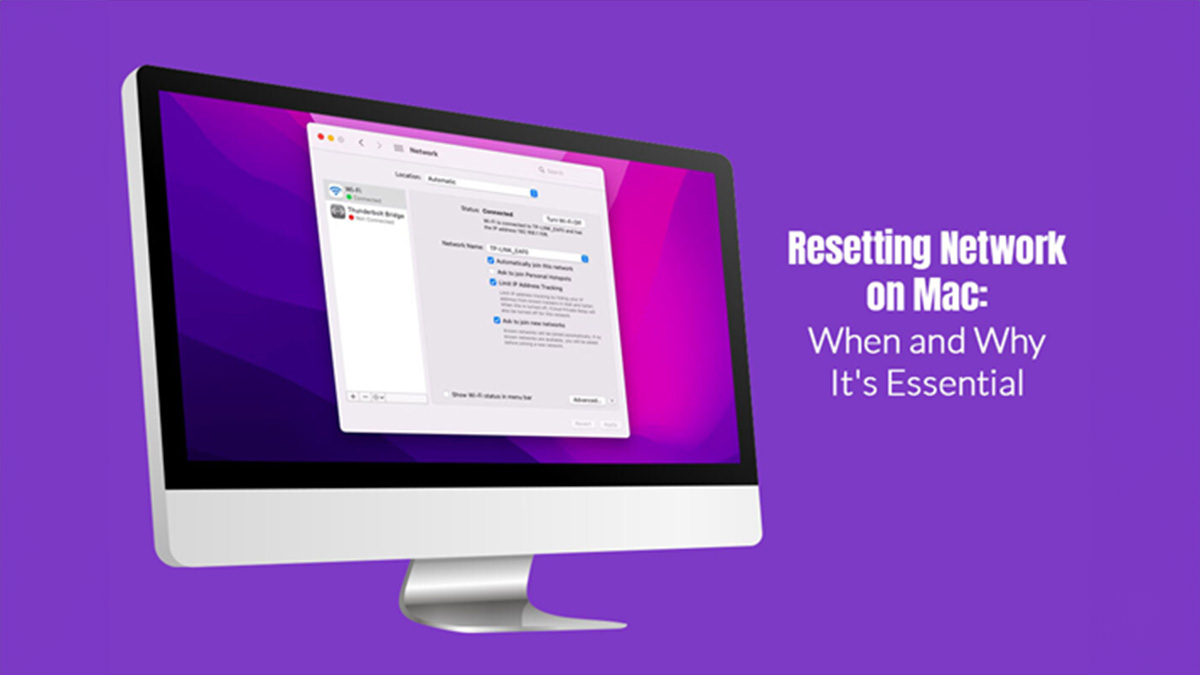In today’s technology-driven world, a stable and reliable internet connection is absolutely essential for Mac users. Whether you’re streaming videos, working from home, or just casually browsing the web, any hiccup in your network can be a major annoyance. Fortunately, there’s a powerful troubleshooting tool in your Mac’s arsenal that can come to the rescue: resetting the network. In this article, we will delve into the vital topic of when and why it’s crucial to reset your network on a Mac. We’ll not only highlight the significance but also guide you through the necessary steps.
When to Consider Network Reset on Mac
Before we delve into the technical aspect of resetting your Mac’s network, let’s first establish when you should consider this course of action using the reset network settings Mac Terminal. Recognizing the right moment to reset your network can save you valuable time and quite a bit of frustration. Here are some common situations when you should give network reset some thought:
Intermittent Connectivity
If you find yourself experiencing frequent, maddening drops in your Wi-Fi or Ethernet connection, it’s a clear signal that something isn’t quite right. These recurring disruptions can often be swiftly resolved by resetting your network settings.
Slow Internet Speed
A sluggish internet connection can be a major productivity killer. When you notice your Mac struggling to load web pages or videos at a snail’s pace, it’s definitely time to consider a network reset.
Unable to Connect
If your Mac flat out refuses to connect to any available Wi-Fi network or Ethernet connection, resetting the network could be the key to resolving the issue.
Limited Network Access
It’s not uncommon to encounter situations where you can access certain websites or services while others remain frustratingly out of reach. This dilemma can often be traced back to your end of the network connection, and resetting it might just be the fix you need.
Why Network Reset is Essential
Resetting your network on a Mac is like pressing the reset button on your internet life for several good reasons:
Clears Network Cache
Over time, your Mac accumulates network data, which can sometimes lead to technical hiccups. When you reset the network, you effectively wipe the slate clean by clearing this cache, offering your connection a fresh start.
Resolves Configuration Errors
Incorrect network settings or changes that didn’t quite take effect can give rise to frustrating connectivity issues. A network reset swiftly sets everything back to the default settings, neatly ironing out these configuration errors.
Fixes IP Address Conflicts
Sometimes, in the grand network play, devices on the same network can end up with clashing IP addresses, leading to quite the commotion. A network reset can intervene, reassigning IP addresses and smoothing over these conflicts.
Removes Unwanted Connections
There may come a time when your Mac attempts to connect to networks you neither use nor trust anymore. Resetting the network helps you purge these unwanted connections, making for a cleaner and more reliable network experience.
How to Reset the Network on a Mac
Now that you’ve grasped the importance of network resets let’s explore the practical side of things: how to go about resetting your network on a Mac.
Access Network Preferences
To begin, hit on the Apple logo on the upper-left side of your screen and select “System Preferences.” Locate and select “Network” from the System Preferences box.
Choose Active Connection
Inside the Network pane, you’ll notice the active connection your Mac is currently using. It might be Wi-Fi, Ethernet, or other options. Click on the active connection; it will be highlighted.
Open Advanced Settings
Toward the bottom right of the Network pane, you’ll spot an “Advanced” button. To access the advanced settings, click on it.
Reset the Network
Inside these advanced settings, search for a tab labeled “TCP/IP” or something similar. Here, you’ll find an option to “Renew DHCP Lease” or “Reset Configuration.” Click on this option, and your network settings will reset.
Reconnect
Once your network settings have been reset, you’ll need to reconnect to your Wi-Fi or Ethernet network. You might have to enter your password if required, and your Mac should be back online and ready for action.
Additional Tips for Network Troubleshooting on Mac
Before you leap into resetting your network, there are a few other steps you can explore. Think of them as the “pre-flight checklist” before you hit the reset button:
Check Your Modem and Router
Sometimes, the source of your network woes isn’t within your Mac but outside, with your modem or router. Make sure they’re both powered on, functioning smoothly, and not obstructed by physical obstacles or interference from other devices.
Restart Your Mac
A surprisingly simple yet effective step. Sometimes, all your Mac needs is a fresh start. Before diving into a network reset, try a quick reboot of your computer to see if it magically smooths out minor network hiccups.
The Importance of Backing Up Your Data Before a Network Reset
Now, here’s an essential point to consider before you embark on the network reset journey: it comes with a caveat. Restoring your network settings will erase all of your previously saved Wi-Fi passwords and network preferences. To avoid the hassle of reconfiguring everything from scratch, it’s vital to back up your crucial data. Here’s how you can safeguard your network settings:
Backup Network Settings
Start by delving into your Mac’s System Preferences and navigate to the “Network” pane. There, you’ll spot a list of your cherished Wi-Fi networks on the left. It’s a smart move to take a screenshot or note down your network names and passwords before diving into the reset.
Time Machine Backup
For a more comprehensive backup, consider employing Apple’s Time Machine feature. Time Machine performs a snapshot of your entire system, including your network settings. This means that if you ever need to revert to your previous network configurations, it’s a smoother process.






